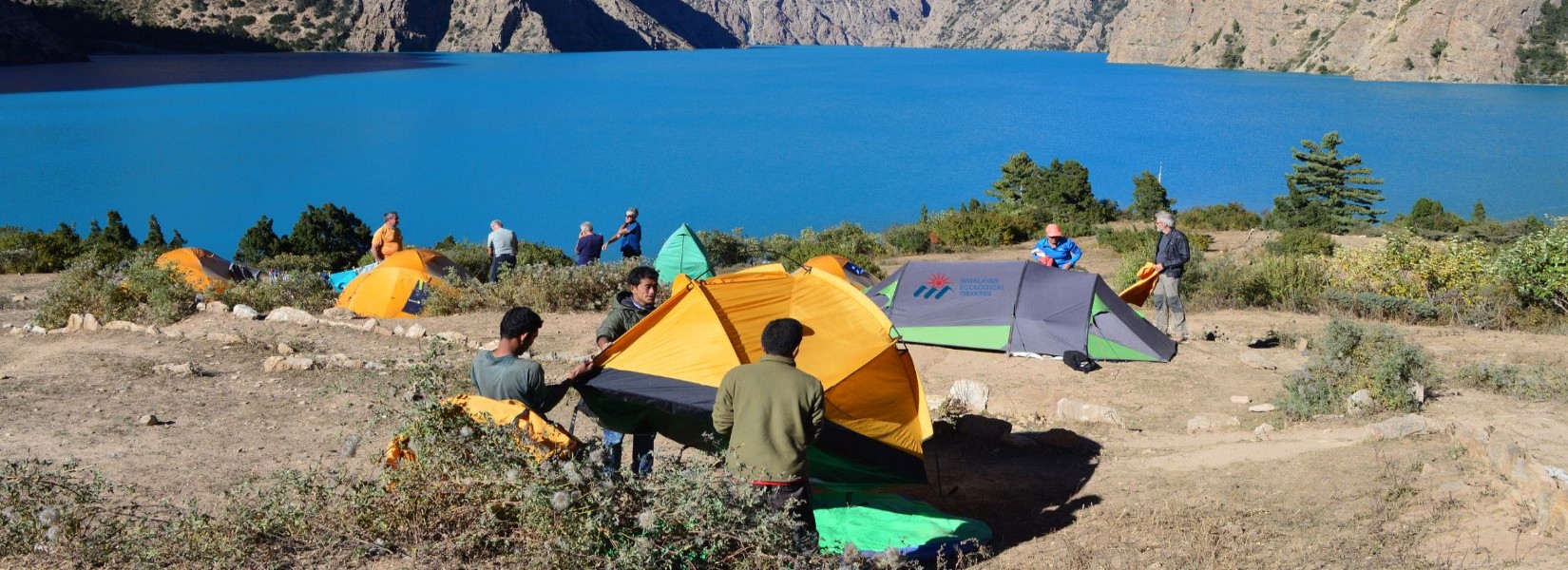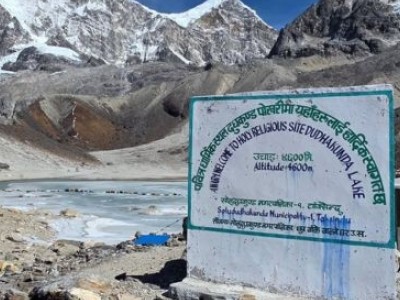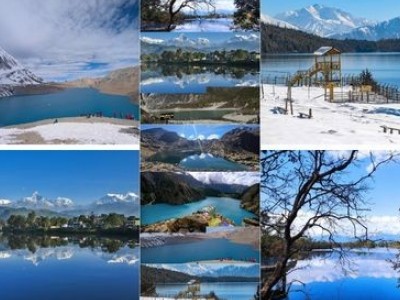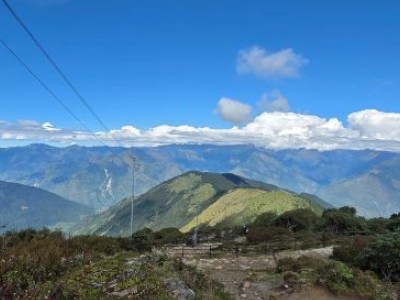The Best Time to Trek Upper Dolpo
If you're planning an Upper Dolpo adventure, the best times to trek Upper Dolpo are from late April through early June (spring) and from September through early November (autumn). During these times, the weather is typically at its best, with clear views of the mountains, comfortable temperatures (but still cool) during the day, and trail conditions that make this challenging trek possible for properly prepared and adventurous trekkers.
The Upper Dolpo trekking season in Nepal is not very long compared to other popular trekking destinations, mainly due to its high altitude location and winter conditions. Most tea houses and lodges close from December through March, meaning spring and autumn are the primary trekking months. This also adds to the Upper Dolpo experience, as far fewer trekkers visit Upper Dolpo than more mainstream routes, such as the Everest Base Camp or Annapurna Circuit.
The spring season (April-June) offers longer days, blooming wildflowers at lower elevations, and a gradual warming of the temperatures, which helps make high-altitude trekking more comfortable. The Upper Dolpo trek spring season attracts trekkers wanting to experience colors in the landscape and while hiking during the day, and it is cold at night (remember, we are in the Himalaya!)
The autumn season (September-November) boasts incredibly clear mountain views, consistent weather patterns, and temperate temperatures, making conditions ideal for photographing and enjoying the mountains. The Upper Dolpo trek during the autumn season is universally regarded to be the best time for photography or simply for those wanting to see the clearest possible views of the Himalaya, as the post-monsoon clarity offers unbelievable visibility of far-off mountain tops.
Times to visit Upper Dolpo will best depend on your preferences; spring offers warmer temperatures and longer days, while autumn offers better visibility and more stable weather patterns. Both seasons will require adequate preparation for cold nights and possible weather changes at high altitude.
Understanding Upper Dolpo's Climate and Geography
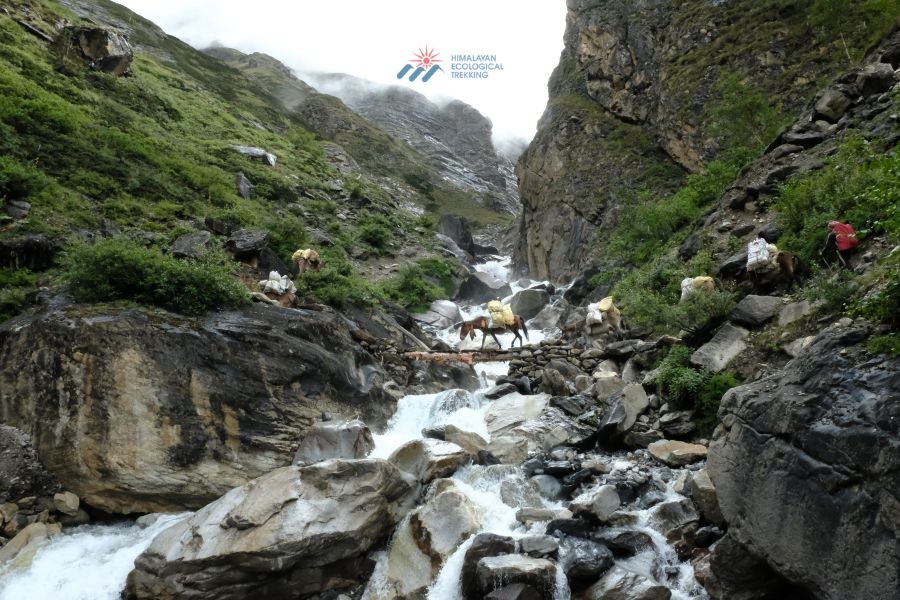
Upper Dolpo is located in the rain shadow of the Himalayas, giving it a distinct high-altitude desert biome quite unlike the lush valleys of other parts of Nepal. This Trans-Himalayan region has weather patterns more similar to those of Tibet than the subtropical lowlands of Nepal, and serves as a case study in geographical gradation.
Upper Dolpo's elevation ranges from 3,000 to more than 5,000 meters. Due to the great variance of height along the trekking path, the area has a wide diversity of microclimates. Whether it is snowing or sunny, cloudy or windy, Dolpo's weather varies significantly with elevation, season, and even time of day. You can expect to walk in severe sunlight below the freezing temperatures all in one day on the upper Dolpo trek.
Because Dolpo is north of the main Himalayan range, it is not subjected to the monsoonal rains and therefore experiences most of the year in arid conditions. Dolpo's geographical advantage makes it one of the very few trekking regions in Nepal that can be trekked during the monsoon season, even if they do present some difficulties, including afternoon cloud buildup and reduced visibility.
The territory is defined by barren hills that resemble the Tibetan plateau, carved out of high mountain passes above 5,000 meters, deep gorges that were once rivers in a bygone geological age, and ancient Buddhist monasteries that have existed for countless centuries. Knowing how to navigate and survive in these different landscapes is crucial for trekkers. It helps determine the challenges trekkers may face, both in terms of meteorological conditions and during their trek.
This region receives very little annual rainfall, often below 500mm of rain a year, with the rain falling mostly as snow in the winter months. The semi-arid conditions produce a stark, otherworldly beauty. However, if you are not cognizant of possible water sources, you and the rest of your group may have to go without water. It is paramount to plan for water and camp campsite.
Season-wise Breakdown
Spring Season (April - June)

The best time to visit Upper Dolpo during spring offers several distinct advantages for trekkers willing to embrace gradually improving conditions:
April: Trail conditions improve as the weather gets warmer and lower elevations start to thaw out, although the latter's higher elevation counterparts may remain challenging to pass at elevation. Expect daytime temperatures to be 10-15°C at moderate elevation and 0-5°C at night. By early April, there could still be significant snow on passes above 4,500 meters that would require consideration of alternative routes and also flexible schedule planning.
April also offers opportunities to observe and photograph wildlife as animals come out of hibernation and are more active. Blue sheep, snow leopards, and some species of birds that frequent high altitudes become visible and depths of experience as you take photos of wildlife you'll find on your trek.
May: Though May is generally thought to be one of the best months to trek in Upper Dolpo, it offers fantastic weather, and is between accessibility and comfort temperatures. Daytime temperatures rise to 15-20°C, while nighttime averages are closer to 5-10°C, which makes for surprisingly comfortable camping compared to the earlier months in spring.
Accessibility is improved dramatically in May, given that there will be no excessive snow for most of the passes, and each of these sections was more beautiful in May. May does offer the longest daylight hours of the trekking season, allowing more time for photography opportunities, wandering, and spending time with people from the communities along the trails.
June: late spring can deliver the warmest head temperatures of the year, but pre-monsoon clouds can also begin to reduce the visibility of these amazing mountains - especially in the afternoons. Daytime temperatures can be 20–25°C, which makes it the most comfortable month for hiking - even if late afternoon clouds occasionally block distant peaks.
June does represent the start of a transitional phase toward monsoon season; however, despite its proximity to Upper Dolpo's consistent rain shadow, the labour of the rain usually results in little rainfall. Nonetheless, the increased cloud both affects photographic settings, which lures many trekkers to this remote region, and changes the colour of the sky and mountains!
Autumn Season (September - November)
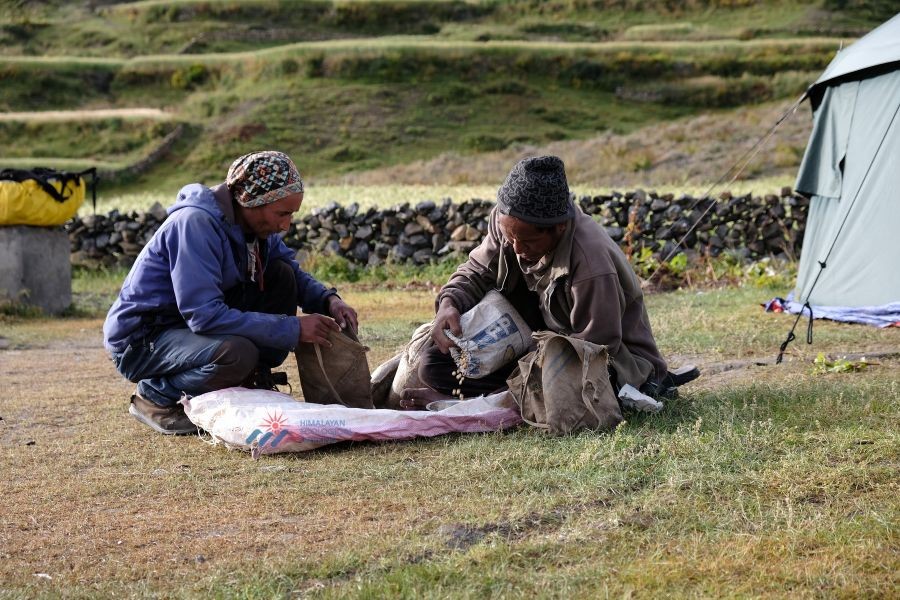
For many experienced trekkers, autumn is the best season to trek Upper Dolpo because it offers the most consistent weather patterns and clearest mountain views:
September: Post-monsoon visibility presents breathtaking mountain scenery with an ambience that is so clear you feel you can see peaks hundreds of kilometres away. Daytime temperatures are warm at 15-20 degrees Celsius and cool at night at 5-10 degrees, creating a satisfying temperature profile while trekking, as it is not too hot, nor cold. As a seasoned trekker would know, having near-perfect conditions makes the trek easier and pleasurable.
The trail conditions are at their best following the monsoon maintenance, and local trekking communities have repaired any washouts or landslides from the summer months. September is a great time to trek in Bhutan with settled weather patterns that have little precipitation and reliable daily patterns.
October: Peak season provides the ideal time to trek in Dolpo with pristine weather, no clouds or rain, and fantastic potential for photographs. Expect daytime temperatures to be 10-15°C, dropping to around 0-5°C overnight, requiring good sleeping equipment, but not too bad for most trekkers who are organised.
October offers the most consistent weather patterns throughout the year. There is virtually no cloud, stable barometric pressure, and daily temperatures are predictable. October has the most trekkers, although numbers are low compared to popular trekking routes.
November: The effects of early winter conditions will start to begin to impact the region with shorter days, colder temperatures, and the end of the trekking season on the horizon. Daytime temperatures will be in the 5-10°C range, and cold nights will be an average of -5 to 0°C; both temperatures require that you pack winter-weight sleeping gear and clothing.
By late November, there may be early snow at high passes, or the potential for snow to limit the accessibility of the trails, making flexible itineraries a good idea. However, for good trekking conditions, this is still a great time to trek for individuals wishing to skip the crowds and enjoy the crisp, clear views of the mountain in early November.
Winter Season (December - March)
Winter involves extreme cold and snowfall, with complete closure of passage options and trek assistance for all but the most experienced mountaineers with specialized mountaineering-grade equipment. Most lodges are closed at this time, and all high passes are completely impassable with very deep snow and potential avalanches.
Winter temperatures are typically well below freezing. Once the expedition reaches its height and drops to -20 or lower, survival can become very difficult even with high-quality equipment. This time of year, the whole region is completely cut off from the local communities, with stockpiling supplies before the winter season.
Summer/Monsoon Season (July - August)
While Upper Dolpo receives substantially less rain from the monsoon than other Nepalese regions, summer nevertheless presents unique challenges, including cloud cover, decreased visibility, and possible trail washouts in lower elevations. Nevertheless, some seasoned trekkers enjoy the advantages of the summer season and the freedom of choosing the time of year to visit Dolpo while observing it for a brief time in the growing season.
Summer temperatures are moderate (15-25°C) during the day, but the build-up of clouds in the afternoon is commonplace, which decreases visibility and eliminates many photo opportunities to enjoy the mountains. The summer season also offers unique insights into local farming and the time when more perennial and hardy crops will grow in a very unyielding climate.
Alternative Trekking Periods
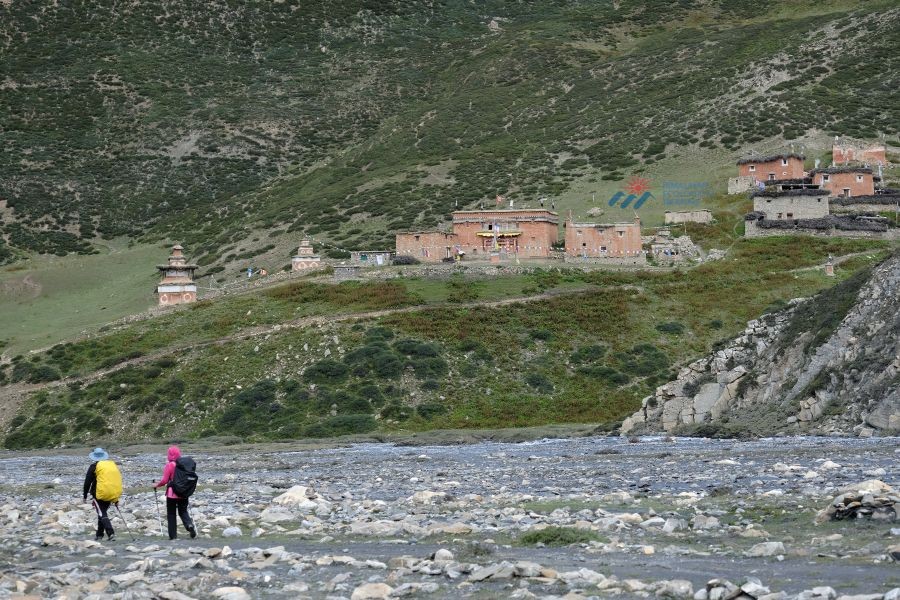
For adventurous trekkers seeking unique experiences beyond traditional seasons, alternative periods offer different perspectives on this remarkable region:
Late March/Early April
It is not uncommon for experienced high-altitude trekkers to attempt early-season trekking, although snow conditions normally require extensive mountaineering experience, specialized gear, and flexibility in itinerary. This period of trekking brings full isolation with beautiful, pristine snow-covered landscapes, but requires expert preparation. Late June/Early July: This pre-monsoon period gives the warmest temperatures of the year and much more cloud cover, which reduces opportunities for mountain views. This timing works for trekkers for looking for cozy, easy hiking experiences, rather than looking for new postcard opportunities, plus you get the chance to see local communities just before they go into their existing farming season.
Late November/Early December
Early winter attempts require a lot of cold-weather gear, experience in winter mountaineering, and risk more in terms of significant use of weather window changes. The trade-off is great mountain landscapes and clear air, although it requires the highest skill levels and most thoughtful equipment.
This whole collection of alternative periods requires far more skill, equipment, and flexibility in itinerary due to unpredictable weather patterns and reduced available trekking support infrastructure.
Frequently Asked Questions
When is the ideal time to trek Upper Dolpo?
The best time to trek Upper Dolpo is in October for autumn and May for spring, as these months have the best stable weather, the trails are more accessible, and the mountain views are at their best.
Is it possible to hike Upper Dolpo in the monsoon season?
You can trek Upper Dolpo during the monsoon season (July-August) because of its rain shadow position; however, this is not ideal for most trekkers due to extensive clouds and reduced mountain visibility.
How cold is it during the best trek months?
The ideal months to trek Upper Dolpo are May and October, when the nighttime temperatures will be between 0 and 10 degrees Celsius, and the daytime temperature will be around 10-20 degrees C, depending on the altitude and weather.
Are the tea houses open all year round in Upper Dolpo?
There are no tea houses or lodges open all year round. During December-March, all the tea houses and some lodges will be closed due to severe winter conditions. This restricts Nepal's Upper Dolpo trekking season to the spring through autumn timeframe.
What is the difference between spring and autumn for Upper Dolpo trekking?
To spring, you have temperatures that gradually warm, and longer daylight hours; to autumn, you have clearer mountain views, more stability in the weather, and ideally better photo-taking opportunities.
How many days do I need for the Upper Dolpo trek?
Most Upper Dolpo treks take a minimum of 18-21 days, so it is important to plan when trek to Upper Dolpo promptly for planning, scheduling, and preparation.
What permits do I need for Upper Dolpo?
Upper Dolpo requires special restricted area permits in addition to standard trekking permits, and these rules and regulations will affect seasonal availabilities and group-size requirements.
Conclusion
Determining the best time of year to embark on a trek in Upper Dolpo profoundly influences every aspect of the trek in this incredible Trans-Himalayan region of Nepal. In Upper Dolpo, spring (April–June) and fall (September–November) are the ideal times of year to trek. Of these, May and October are the most desirable months for good weather, access to trails, and quality mountain visibility.
The weather conditions during the pre-monsoon and post-monsoon seasons in Upper Dolpo provide the perfect balance of comfortable temperatures, clarity of mountain views, and not dangerously inaccessible trails that present otherwise impassable conditions on a proper trek of this type. While alternative periods equally present travelers with unique experiences and perspectives of the region, embarking during these periods requires alternative preparations with appropriate equipment and advanced flexibility with trek planning and execution.
By trekking during the slightly warmer months of spring with their longer feeling days, and excitingly new wildflowers, or the crystal-clear skies of autumn with their incredible mountain visibility and stable weather patterns, travelers ensure their experience of Upper Dolpo's ancient Tibetan Buddhist way of life, pristine high-altitude desert landscapes, and an "intensity" of spiritual atmosphere is at its absolute finest.
You should plan your trek in those specific recommended best months to trek in Upper Dolpo for an amazing Himalayan adventure and total immersion into nature, next to the cultural experience of journeying in one of Nepal's last hidden kingdoms, which retains its historic way of life unchanged in one of the most remote and extraordinary mountain environments in the world.
Contact us at Himalayan Ecological Trekking to plan your adventure!
Get in touch with Email:[email protected] or WhatsApp: +977 9851006023 (Bikesh Rana)
Familiar trekking you may like it:
